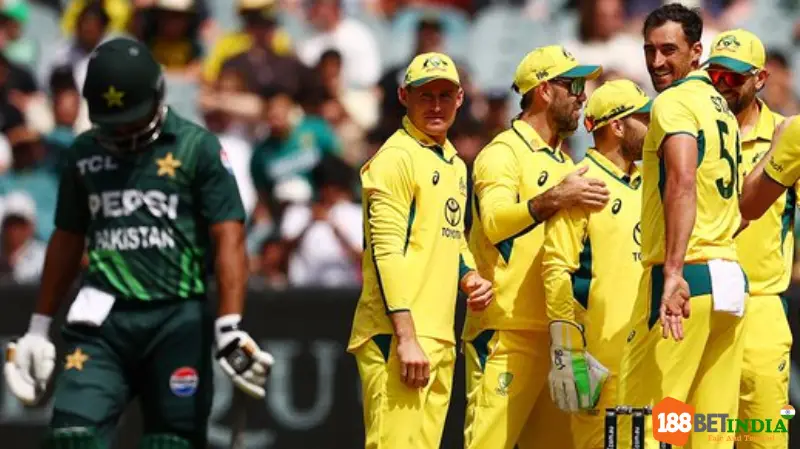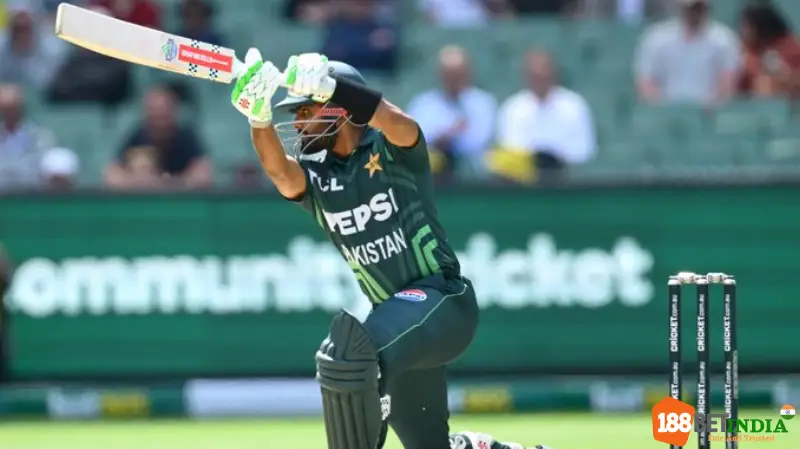The cricketing world has been treated to yet another epic showdown as Pakistan squared off against Australia in the first One-Day International (ODI) at the iconic Melbourne Cricket Ground (MCG). The match carried more than just a hint of anticipation—new faces made their debut, seasoned players returned, and strategic plays unfolded on the cool, atmospheric day.

A Day of Firsts for Pakistan
In a game that marked Pakistan’s first ODI appearance since the 2023 World Cup, the lineup featured fresh talent and significant changes. ODI debuts were handed to Saim Ayub and Irfan Khan, with none other than the legendary Wasim Akram presenting their Pakistan caps. The opening duo, Ayub and Abdullah Shafique, sparked interest given their previous mixed records as a Test pair. Meanwhile, the batting order saw Babar Azam returning at the vital No. 3 spot after resting during the final stretch of the England Tests.
Captain Mohammad Rizwan, renowned for his steady hands and sharp tactics, took the fourth position. To add firepower to Pakistan’s bowling lineup, the formidable Shaheen Shah Afridi and Naseem Shah returned, bolstering a robust four-man pace attack ready to unsettle Australia’s top order.
Australia’s Bowling Powerhouses
Australia, known for its aggressive starts and tactical prowess, opted to bowl after winning the toss. This decision was bolstered by the recent performance of Mitchell Starc, who had just scalped seven wickets in a Sheffield Shield match at the MCG—no doubt an intimidating factor for Pakistan’s batsmen. However, Josh Hazlewood, taking a brief hiatus from ODI action, was notably absent, competing instead in the Sheffield Shield for New South Wales. He is expected to join the team for the second ODI in Adelaide.
Opening Strategies: A Tale of Two Teams
Matthew Short and Jake Fraser-McGurk opened for Australia, stepping in for the paternity-leave-absent Travis Head and Mitchell Marsh. Their dynamic partnership set the pace, though all eyes were also on veterans like Steven Smith at No. 3 and Marnus Labuschagne at No. 5. The ever-adaptable Glenn Maxwell was positioned as a “floater” in the lineup, capable of entering at strategic moments to maximize his impact.
For Pakistan, Saim Ayub’s debut brought excitement but also trepidation as fans wondered if he could replicate his domestic brilliance on the international stage. His partnership with Shafique was under scrutiny after their lukewarm record in Tests. Yet, Ayub’s entry suggested Pakistan’s willingness to shake things up and foster new talent.
Match Recap: A Tug-of-War Battle
With the toss won by Australia, Pakistan had the task of setting a competitive total on the MCG’s typically pace-friendly track. Early on, Ayub showed moments of promise, confidently playing Starc’s deliveries before falling prey to a blistering yorker. Shafique fared better, playing cautiously against Starc and Pat Cummins but ultimately succumbing to an outswinger that caught the edge.
Babar Azam showcased his classic finesse, threading cover drives and flicks that reminded everyone why he’s a force at No. 3. However, it was Rizwan who drew attention with a composed yet aggressive inning that steadied Pakistan after early losses.
Australia’s bowlers kept the game tight. Starc’s menacing pace, combined with Pat Cummins’ consistent line and length, limited Pakistan’s scoring opportunities. Adam Zampa’s spin added an element of surprise, deceiving Pakistan’s middle order with variations that kept them guessing.
A Late Surge and Bowling Dominance
Pakistan’s total may not have been headline-grabbing, but their bowling attack made sure it was defended fiercely. Afridi’s blistering pace and Naseem’s accurate bouncers put Australia’s openers on the back foot. Markram’s leadership was evident as he rotated bowlers effectively, ensuring no batsman got too comfortable.
Dane Paterson’s entry for Australia as an additional quick bowler paid dividends, further tightening the screws on Pakistan’s batting lineup. The synergy between the seamers and fielders showcased Australia’s relentless cricket ethos.
Key Takeaways
- Pakistan’s Fresh Talent: The debuts of Saim Ayub and Irfan Khan injected new energy, though their performances indicated that more exposure and experience are needed.
- Australian Bowlers’ Precision: Starc’s lethal form and Zampa’s wily spin played critical roles in keeping Pakistan’s batsmen under pressure.
- Rizwan’s Steady Hand: As captain, Rizwan’s leadership was commendable, particularly in maintaining team morale and strategic placements.
FAQs
Saim Ayub and Abdullah Shafique showed flashes of potential but struggled to build a lasting partnership against Australia’s formidable bowling attack.
Mitchell Starc’s early breakthroughs and Adam Zampa’s clever spin bowling stood out, showcasing Australia’s depth in their bowling department.
Mohammad Rizwan took on the captaincy, stepping in for Babar Azam, who returned to his crucial No. 3 batting spot.

Conclusion
The Pakistan vs Australia match at the MCG was a riveting showcase of cricket strategies, new talent, and seasoned performances. While Australia’s decision to bowl first proved insightful, Pakistan’s efforts underscored the challenges and adaptability needed in the ever-competitive ODI format. Both teams displayed glimpses of brilliance, promising more thrilling encounters in this closely watched series.
